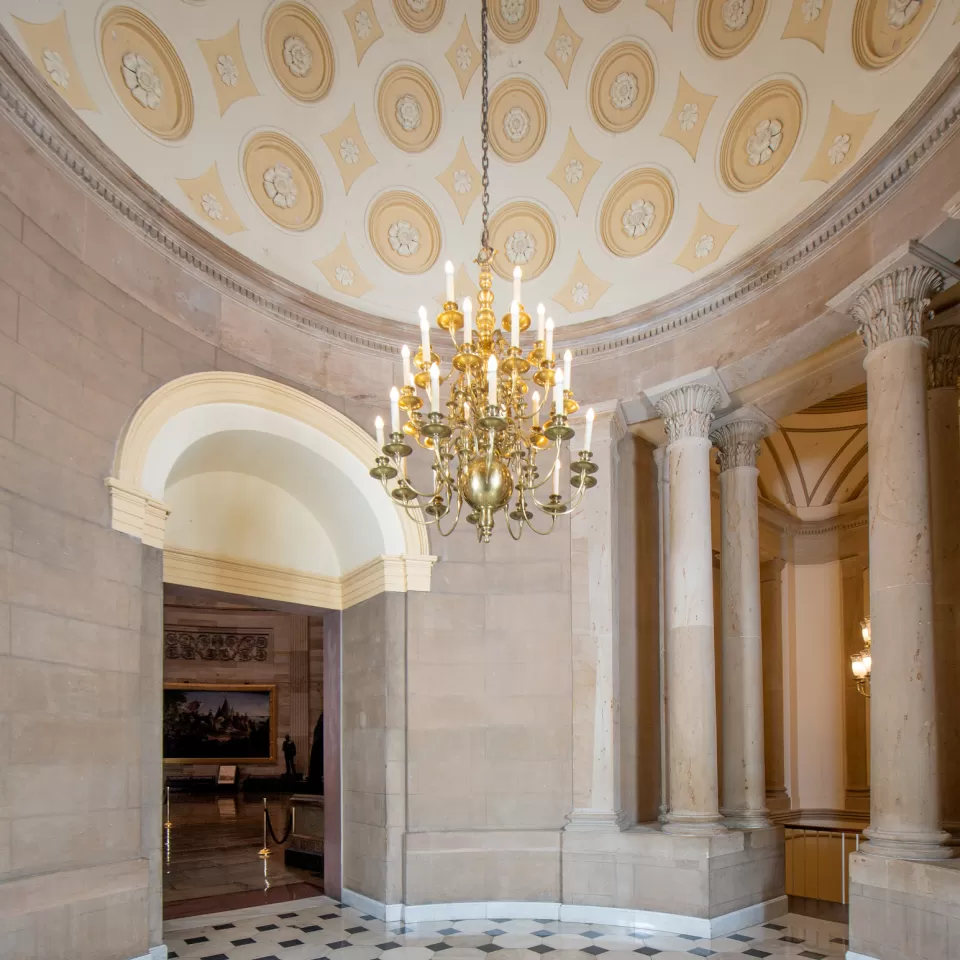What is the "whispering gallery" in the U.S. Capitol?
The half-dome shape of National Statuary Hall produces an acoustical effect whereby, in some spots, a speaker many yards away may be heard more clearly than one closer at hand. The modern-day echoes occur in different locations from those in the 19th century, when the floor and ceiling of the hall were different.

Highlight
Francis Preston Blair Jr. Statue
Missouri gave this statue to the National Statuary Hall Collection in 1899. Alexander Doyle (1857-1922) sculpted three statues in the collection, contributed by Missouri and West Virginia.
House Wing



